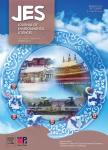Metabolic responses of indigenous bacteria in chicken faeces and maggots to multiple antibiotics via heavy water labeled single-cell Raman spectroscopy
Metabolic responses of indigenous bacteria in chicken faeces and maggots to multiple antibiotics via heavy water labeled single-cell Raman spectroscopy作者机构:Key Lab of Urban Environment and HealthInstitute of Urban EnvironmentChinese Academy of SciencesXiamen 361021China Department of MicrobiologyFederal University of TechnologyPMB 704 AkureNigeria University of Chinese Academy of SciencesBeijing 100049China
出 版 物:《Journal of Environmental Sciences》 (环境科学学报(英文版))
年 卷 期:2022年第34卷第3期
页 面:394-402页
核心收录:
学科分类:0830[工学-环境科学与工程(可授工学、理学、农学学位)] 082803[工学-农业生物环境与能源工程] 08[工学] 0828[工学-农业工程]
基 金:supported by the National Natural Science Foundation of China (Nos.21777154,21922608) the Alliance of International Science Organizations(No.ANSO-CR-KP-2020-03) the Original Innovation Program of Chinese Academy of Sciences(No.ZDBS-LY-DQC027) CAS President’s International Fellowship Initiative(PIFI)for 2017.
主 题:Chicken faeces and maggot Antibiotic resistance Heavy water-Raman spectroscopy Single-cell Metabolically active cells
摘 要:The use of maggots derived from chicken faeces as fish diets might serve as a vehicle for the widespread of multiple antibiotic resistant bacteria(ARB) in the environment. Heavy water labeled single-cell Raman spectroscopy(D_(2)O-Raman) was applied to detect the metabolic responses of indigenous bacteria in chicken faeces and maggots to different concentrations of combined colistin, kanamycin, and vancomycin. By incubating the samples with D_(2)O and antibiotics, metabolically active bacterial cells to antibiotics were distinguished from those inactive by the exhibition of C-D Raman band. Using the C-D band as a universal metabolic biomarker, 96% and 100% of cells in chicken faeces and maggots were revealed to be metabolically active to 1 × minimum inhibition concentration(MIC) of the aforementioned antibiotics. A noticeable decrease in the percentage of active cells from 96% to 76% in faeces and 100% to 93% in maggots was observed at 5 × MIC of antibiotics. However, these ratios were still far above that obtained from the same faeces(1.84%) and maggots(0.51%) samples using a cultivation method, indicating the wide presence of nongrowing but metabolically active bacterial cells under antibiotic treatment. Conclusively, the cultureindependent D_(2)O-Raman approach detected and quantified a large portion of metabolically active indigenous bacteria to multiple antibiotics in their native environments, illustrating the great potential risks of these active cells to spread antibiotic resistance via food chain.



